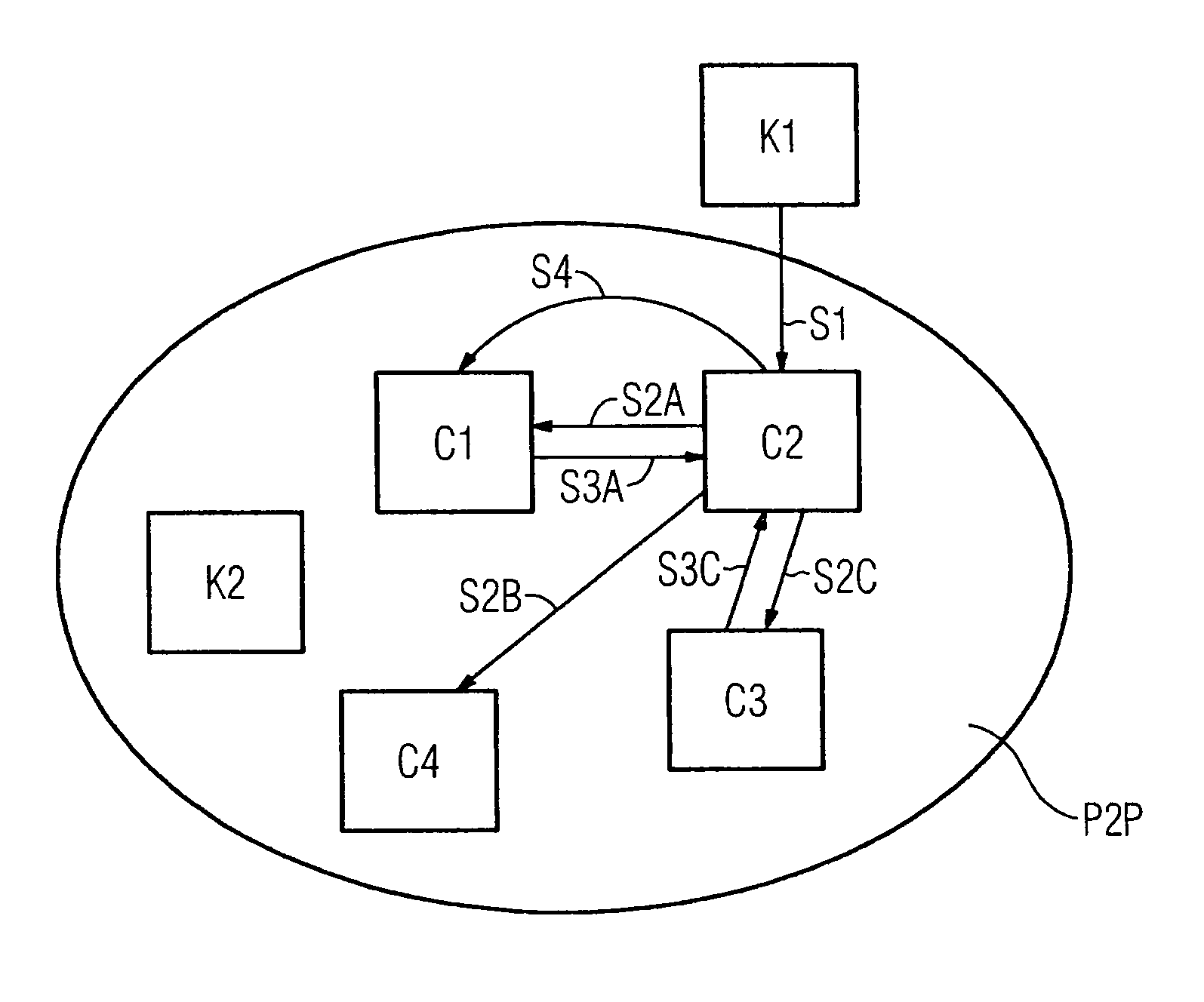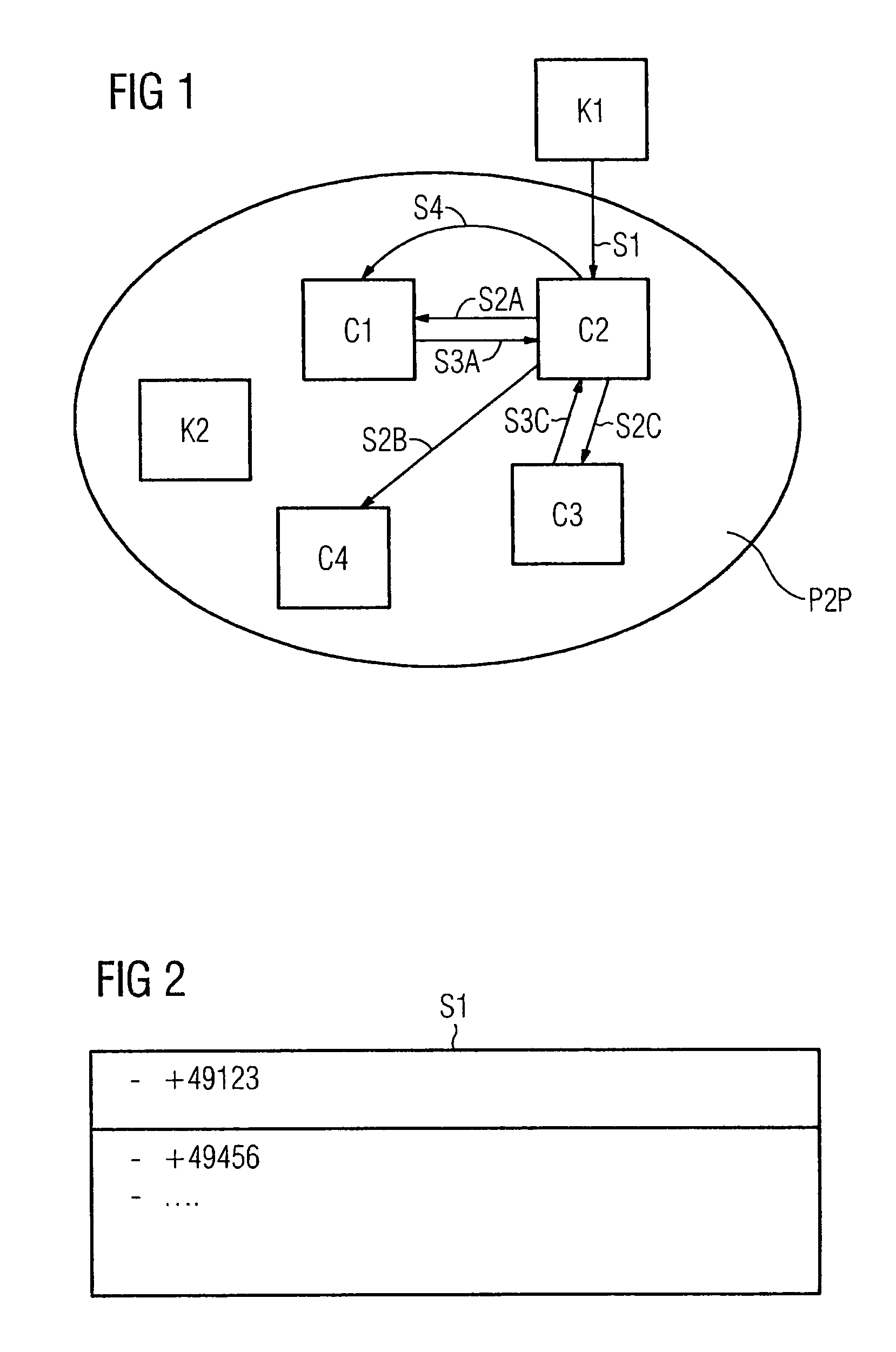Call distribution in a direct-communication network
a direct-communication network and call technology, applied in the field of direct-communication network call distribution, can solve the problems of losing the flexibility inherent in peer-to-peer network and self-organization, and not being able to integrate an acd system into a switching, so as to improve the redundancy
- Summary
- Abstract
- Description
- Claims
- Application Information
AI Technical Summary
Benefits of technology
Problems solved by technology
Method used
Image
Examples
Embodiment Construction
[0023]FIG. 1 schematically shows a direct-communication communication network P2P (Peer-to-Peer) which contains the clients C1, C2, C3, C4. The clients C1, C2, C3, C4 are formed by communication components (IP telephone, multimedia PC, PDA, WLAN terminal, smart phone or the like), with client C1 being a communication component with a voice mail server functionality (telephone answering machine function), clients C2 and C3 being multimedia PCs (computer with a telephony function), and client C4 being a IP phone (VoIP telephone). In this arrangement, the clients C2, C3 and C4 are associated with the employees at a call center who are associated with different responsibilities and are intended to handle calls from external customers. A further communication component K2, which is likewise arranged in the communication network P2P is not part of the workgroup. The Communication component K1 is shown in FIG. 1 as a representative of an unlimited number of external communication component...
PUM
 Login to View More
Login to View More Abstract
Description
Claims
Application Information
 Login to View More
Login to View More - R&D
- Intellectual Property
- Life Sciences
- Materials
- Tech Scout
- Unparalleled Data Quality
- Higher Quality Content
- 60% Fewer Hallucinations
Browse by: Latest US Patents, China's latest patents, Technical Efficacy Thesaurus, Application Domain, Technology Topic, Popular Technical Reports.
© 2025 PatSnap. All rights reserved.Legal|Privacy policy|Modern Slavery Act Transparency Statement|Sitemap|About US| Contact US: help@patsnap.com



